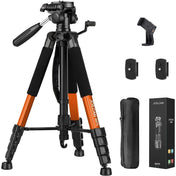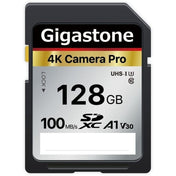Sports photography is all about capturing the intensity, excitement, and defining moments in sports events. Whether you are shooting a professional game or capturing your child's sports activities, having the right techniques can make a huge difference in the quality of your images. In this article, we will explore some essential tips and techniques to help you capture the action and freeze those thrilling moments.
1. Know the Sport
Before diving into sports photography, take some time to understand the sport you'll be capturing. Each sport has its own unique rules, movements, and key moments. Understanding the game will enable you to anticipate crucial action and position yourself accordingly to get the best shots.
2. Use the Right Equipment
The right equipment is crucial for sports photography. You'll need a camera with a fast burst mode and a telephoto lens with a long focal length to zoom in on the action. A lens with a wide aperture, such as f/2.8 or wider, will allow for faster shutter speeds and better performance in low-light environments.
3. Master the Shutter Speed
When it comes to sports photography, using the correct shutter speed is essential to capture fast-paced action. Generally, a shutter speed of at least 1/1000th of a second or faster is recommended to freeze the motion and avoid motion blur. Experiment with different shutter speeds to find the perfect balance.
4. Optimize the ISO
In low-light situations, such as indoor sports venues or evening games, you'll need to increase your camera's ISO to maintain a fast shutter speed. However, be cautious of high ISO settings, as they can introduce noise or grain into your photos. Test your camera's ISO capabilities and find the optimal setting for each lighting condition.
5. Use Continuous Autofocus
Continuous autofocus mode is essential for sports photography as it allows your camera to track and focus on moving subjects. This feature ensures that your shots remain sharp and in focus even as the action unfolds. Experiment with different autofocus modes and practice panning techniques to enhance your skills.
6. Capture the Faces
Emotions are a significant part of sports, and capturing the expressions of the athletes can add depth and storytelling to your images. Focus on capturing their faces during intense moments of the game, and try to get close-ups that reveal their determination, joy, or disappointment.
7. Experiment with Different Perspectives
Don't limit yourself to shooting from the sidelines. Experiment with different perspectives to add variety and unique angles to your sports photos. Get down low for dramatic shots, shoot from behind the goal for a different point of view, or use a fisheye lens to capture the entire field.
8. Timing is Everything
Sports photography is all about timing. Anticipate the peak action or climax of an event and be prepared to capture it. This could be the moment a basketball player dunks, a soccer player strikes the ball, or a gymnast lands a perfect dismount. Patience and good timing are the keys to capturing those unforgettable moments.
9. Frame the Shot Thoughtfully
Compose your shots carefully to create visually engaging images. Use the rule of thirds to place your subject off-center and create a sense of movement. Include elements such as the crowd, stadium, or other athletes to provide context and enhance the storytelling aspect of your images.
10. Shoot in Burst Mode
Sports photography requires capturing fast-action sequences, and shooting in burst mode can greatly increase your chances of getting the perfect shot. Continuous shooting allows you to capture multiple frames per second, increasing the likelihood of capturing that one decisive moment.
11. Post-Processing to Enhance
After capturing your sports images, post-processing can help enhance their impact. Adjusting the exposure, contrast, and saturation can make your photos more vibrant and dynamic. Be mindful not to overdo it, though, as maintaining the authenticity of the moment is important.
12. Practice, Practice, Practice
Lastly, the key to becoming a better sports photographer is practice. Familiarize yourself with your equipment, study the sport, and practice capturing different sports events. With time, you'll develop an instinct for capturing the right moments and refining your techniques.
Capture the Energy and Excitement!
Sports photography is all about capturing the energy, excitement, and emotions associated with sports. By following these techniques and tips, you can improve your skills and capture stunning action shots that tell powerful stories. Remember, practice is key, so get out there, experiment, and have fun capturing those incredible sporting moments!











